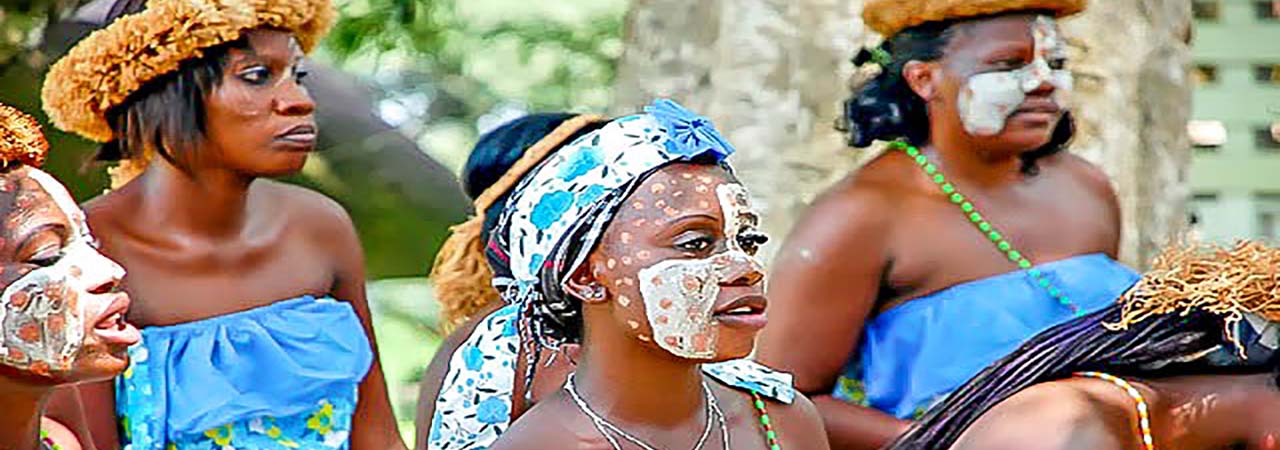Culture / Languages / Religions
Culture


Gabon has an immense culture thanks to its traditional architecture, its local cuisine, its festivities, its folklore ceremonies, its craftsmanship and its social organization modeled on ancestral values. The use of traditional masks occupies an important place in the Gabonese culture. Each ethnic group has masks with different meanings and uses. They are frequently used in traditional ceremonies (marriage, birth, mourning, etc.). The best known and most popular of these masks in the major art markets are the Teke, Obambas, Kotas, punus and fangs masks that are found in major European, North American and Asian museums.
Languages


The official language spoken in Gabon is French. It is the language of education, justice, and administration. It plays a unifying role in the country and is spoken by 80% of the population. Gabon has about 50 ethnic groups and a multitude of languages. There are four main language groups: The Fang is spoken in five of the nine regions, which represents about 32% of the population, the Mpongwè is spoken by about 15% of the population, the Obamba (or Mbédés) is spoken by about 14% of the population and the Punu is spoken by about 12% of the population. Several other languages are also spoken in Gabon.
Religions


Gabon is a secular state with a diversity of religions whose followers live peacefully together. It represents, with regard to its religious cartography, a true crossroads of religions. Before colonization, the peoples of Gabon shared animist beliefs characterized by myths and varied rituals but having common ancestor worship. Christianity and Islam are the two most common religions, with about 76.5% of Christians; 11.2% of Muslims and 6% of traditional religions.
